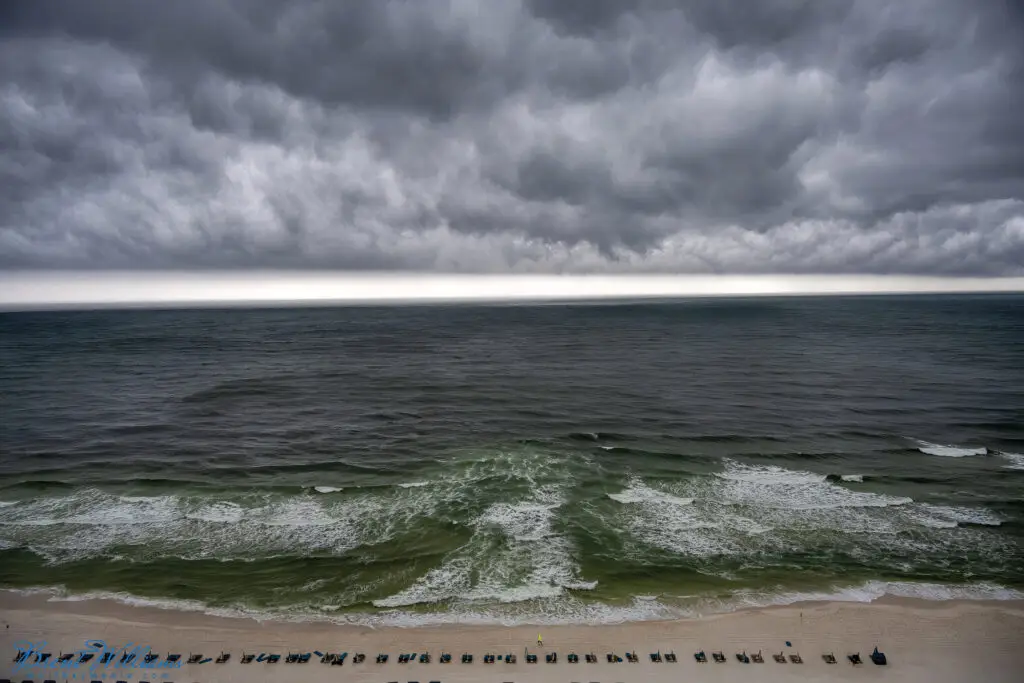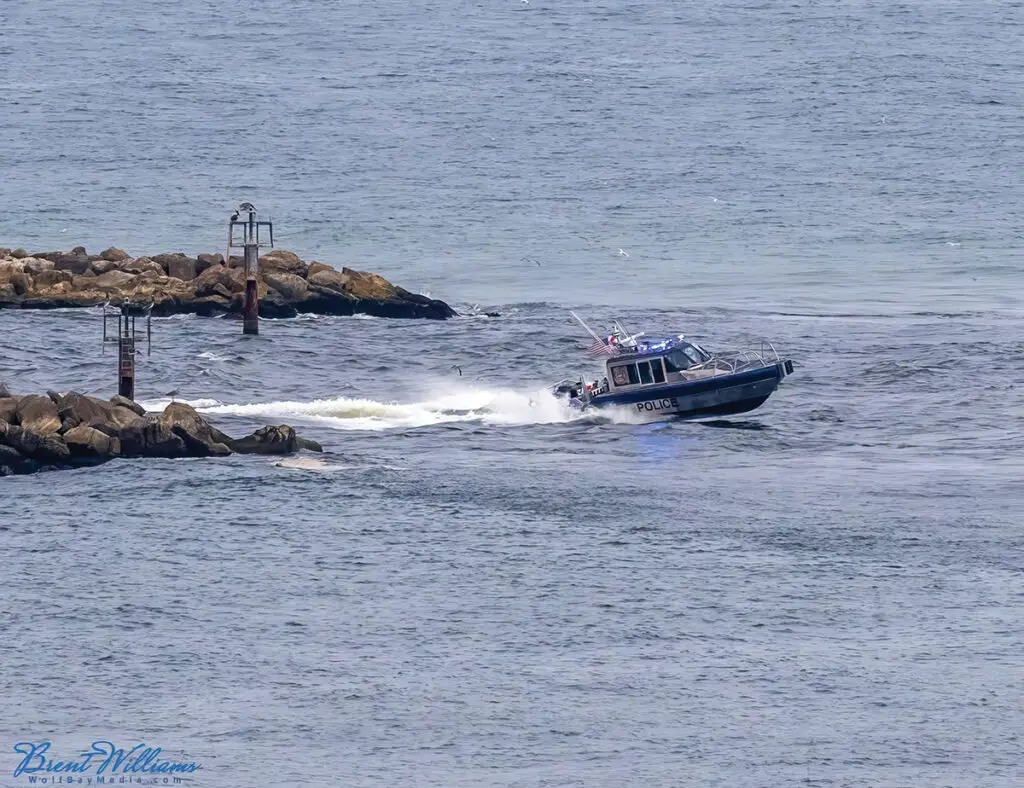The Underrated Beach Danger
Story by Aaron Tanner; Photos by Brent Williams

Picture a warm, sunny day at the beach. You and your loved ones are relaxing on the white sands of Alabama’s beaches, with waves splashing on the shore, tempting potential swimmers to enter its waters. However, those same waters pose a danger unknown to many beachgoers. That risk is an innocent-looking break in the waves called a rip current, which is the leading cause of weather-related deaths along the northern Gulf Coast.
A rip current is a channel of water that flows away from the shore. They often form near jetties, inlets, piers, and sandbars. Despite being able to occur in any weather condition, even on calm, sunny days, at any time of the year, rip currents are most likely to form within a couple of hours of low tide, as well as with a strong, persistent onshore wind or energy transmitted from nearby low-pressure systems, such as a hurricane.
The fast-moving nature of rip currents makes them dangerous. They travel at eight feet per second, faster than an Olympic swimmer can swim. Warning Coordination Meteorologist Jessica Chace of the National Weather Service office in Mobile compares a rip current to a treadmill. “If you stand on a treadmill at the gym, you will quickly be pulled away towards the end of the machine,” she says. “A rip current acts similarly; it can quickly pull you away from the beach and into the ocean.”
Those caught in a rip current often panic due to underestimating their swimming ability and, after being pulled into deeper water, have to be rescued or, in a worst-case scenario, become tired fighting it and drowning.

Unlike an undertow or rip tide, often used interchangeably but incorrectly, a rip current will not pull a swimmer underwater.
Visitors from inland to Alabama’s beaches get in the most trouble with rip currents as they receive less regular exposure and safety training with them than those living on the coast.
“Many vacationers come from areas of the country that do not have a beach environment or hazards to worry about,” says Brett Lesinger, Beach Safety Chief of the Orange Beach Fire Department. From 2002 to 2023, coastal counties served by the National Weather Service offices in Mobile and Tallahassee, Florida, saw 213 fatalities from rip currents, which is more than deaths in those regions from hurricanes, tornadoes, floods, and lightning combined. Many of the rescues and drownings along the coast typically occur with those on vacation from interior areas of the U.S.
If going to the Alabama coast, there are steps one can take to avoid becoming a rip current statistic. To identify a rip current, look for an area of flat, dark water with no waves around where waves are breaking. Also, look for debris in the water, such as seaweed or foam, moving away from the beach. The best view of a rip current is from an elevated surface such as a pier or dune line.
Before getting in the water, check the daily rip current forecast. The National Weather Service Office in Mobile posts daily rip current conditions on its social media and web pages based on computer models, tidal, wave, and wind conditions. Additionally, visitors to Gulf Shores and Orange Beach can receive updated surf condition texts on their smartphones from the Baldwin County Emergency Management Agency.
Another tool to mitigate getting caught in a rip current is to pay attention to the flag system at the beach, which has five different color levels. Green flags mean a low risk of rip currents but exercise caution. A moderate risk of rip currents warrants a yellow flag, while a single red flag warns of a high risk of rip currents and even the strongest of swimmers might think twice about entering the rough surf that day.

Do not enter the water when double red flags are flying; it is closed to the public, and illegally entering it can result in fines or arrest. Dauphin Island uses all five flag color levels. However, even on low-risk days, at Gulf Shores and Orange Beach, the minimum the flags fly is yellow instead of green due to uncontrollable factors in the water. “Green by most accounts implies ‘Go,’ which is not true of all swimmers,” says Lesinger. “We want people to understand there is risk involved with swimming in the open water.”
Unrelated to rip currents, purple flags mean dangerous marine life is present.
Always know your swimming ability before entering the water, and preferably swim near a lifeguard and never alone. As Lesinger warns those entering the water, “The Gulf of Mexico is not a pool; the depth is unknown, and you cannot grab onto a wall if you get tired.” While Dauphin Island, Orange Beach, and Gulf Shores have lifeguards on duty during the busy spring and summer months, ready to rescue distressed swimmers at a moment’s notice, visitors to Fort Morgan should especially exercise caution as there are no lifeguards or flags at its beach.
If caught in a rip current, do not panic. Swim at an angle parallel to the shore instead of towards the beach to escape the rip current. If it is not possible to get out of the rip current, do not fight it; instead, float on your back and yell for help. Do not enter the water if you witness someone caught in a rip current. Instead, call 911 or get a lifeguard’s attention. If no lifeguard is present, calmly give instructions and throw something that floats to the victim until help arrives.
Alabama’s beaches are an excellent destination for making memories. Despite their risks, they are still ideal places to soak up the sun and dip a toe in the water. With proper education and awareness about rip currents, one can avoid those beach memories from becoming tragic.

For tools about Rip Current Safety
Beach forecasts from the National Weather Service Office in Mobile: weather.gov/beach/mob
NWS Gulf Coast Rip Current Awareness Site: weather.gov/tae/ripcurrentawareness
To receive surf conditions on your smartphone text ALBEACHES to 888777




